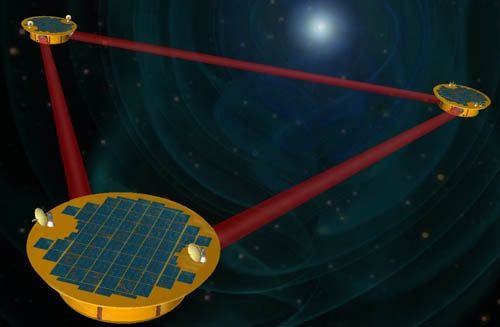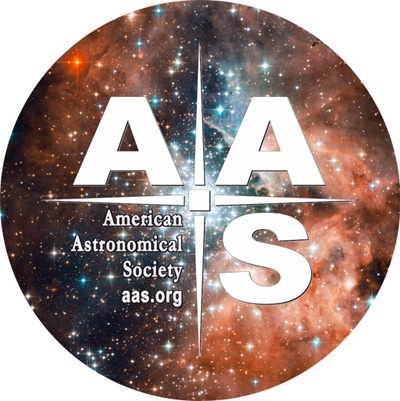10 May 2021
Susanna Kohler

Theory predicts that gravitational-wave detectors should be able to observe a population of huge black holes. A new study explores what we’ll learn from these mysterious objects and when we can hope to find them.

A Preferred Size
So-called stellar-mass black holes — the black holes probed by gravitational-wave detectors like LIGO/Virgo — can theoretically span a broad range of sizes, from just a few solar masses to hundreds of times the mass of the Sun.

The LIGO/Virgo gravitational-wave detectors have discovered signals from dozens of black-hole binaries completing their final death spirals and merging. So far, these observed primary black holes have primarily fallen into a mass range below ~45 solar masses, indicating a precipitous drop in the population of binary black holes above this mass.

Avoiding an Unstable End
Why the dearth of heavier black holes? Theorists have an explanation: the pair-instability supernova mass gap. Based on our understanding of stellar evolution, black holes in a certain mass range — roughly 50–120 solar masses — shouldn’t be able to form. This mass gap arises because the progenitor stars needed to produce black holes of this size are predicted to undergo a runaway process, eventually exploding as violent supernovae that prevent remnant black holes from forming.
The formation of black holes above ~120 solar masses, however, should still be possible — so we’d expect a population of enormous far-side-of-the-mass-gap black holes to be lurking in our galaxy and beyond. In a new study, University of Chicago (US) scientists Jose María Ezquiaga and Daniel Holz dig further into this prediction.
Hunt on the Far Side
Ezquiaga and Holz use the statistics of past black-hole binary detections and predictions of the capabilities of current and future gravitational-wave detectors to estimate what’s in store for us in terms of far-side black holes.
First, the authors show that these heavyweights would be the most massive sources detectable by LIGO/Virgo, and — if they exist — we should be able to spot up to tens of them during LIGO/Virgo’s next two observing runs (O4 and O5).

The estimated maximum number of black-hole-binary mergers detected per year for various current and upcoming ground-based gravitational-wave detectors, and in 4 years for LISA. [Adapted from Ezquiaga & Holz 2021]


What’s more, far-side binaries should also lie in the observing band of LISA, the upcoming space-based gravitational-wave mission. They may dominate the population of binaries that can be observed by both LIGO/Virgo and LISA, providing valuable information about how the merger rate for black-hole binaries changes over time.
Finally, Ezquiaga and Holz show that observations of far-side binaries with LISA, LIGO/Virgo, and the Einstein Telescope (a next-generation detector) will provide an independent measure of the expansion of the universe at different redshifts: z ~ 0.4, 0.8, and 1.5, respectively. By exploiting the upper edge of the mass gap, far-side black holes can act as standard sirens and enable precision cosmology.
Soon To Be Found?
So what’s the upshot? The outlook is good for far-side black holes!
If these heavyweights exist, we should spot them within the next couple years and they’ll be able to provide us with valuable insight into a variety of science questions. If we don’t observe any within this time frame, that also provides a powerful statement about black-hole formation, demanding new theories to explain the dearth.
Citation
“Jumping the Gap: Searching for LIGO’s Biggest Black Holes,” Jose María Ezquiaga and Daniel E. Holz 2021 ApJL 909 L23.
https://iopscience.iop.org/article/10.3847/2041-8213/abe638
See the full article here .

five-ways-keep-your-child-safe-school-shootings
Please help promote STEM in your local schools.

AAS Mission and Vision Statement
The mission of the American Astronomical Society is to enhance and share humanity’s scientific understanding of the Universe.
The Society, through its publications, disseminates and archives the results of astronomical research. The Society also communicates and explains our understanding of the universe to the public.
The Society facilitates and strengthens the interactions among members through professional meetings and other means. The Society supports member divisions representing specialized research and astronomical interests.
The Society represents the goals of its community of members to the nation and the world. The Society also works with other scientific and educational societies to promote the advancement of science.
The Society, through its members, trains, mentors and supports the next generation of astronomers. The Society supports and promotes increased participation of historically underrepresented groups in astronomy.
The Society assists its members to develop their skills in the fields of education and public outreach at all levels. The Society promotes broad interest in astronomy, which enhances science literacy and leads many to careers in science and engineering.
Adopted June 7, 2009
The society was founded in 1899 through the efforts of George Ellery Hale. The constitution of the group was written by Hale, George Comstock, Edward Morley, Simon Newcomb and Edward Charles Pickering. These men, plus four others, were the first Executive Council of the society; Newcomb was the first president. The initial membership was 114. The AAS name of the society was not finally decided until 1915, previously it was the “Astronomical and Astrophysical Society of America”. One proposed name that preceded this interim name was “American Astrophysical Society”.
The AAS today has over 7,000 members and six divisions – the Division for Planetary Sciences (1968); the Division on Dynamical Astronomy (1969); the High Energy Astrophysics Division (1969); the Solar Physics Division (1969); the Historical Astronomy Division (1980); and the Laboratory Astrophysics Division (2012). The membership includes physicists, mathematicians, geologists, engineers and others whose research interests lie within the broad spectrum of subjects now comprising contemporary astronomy.
In 2019 three AAS members were selected into the tenth anniversary class of TED Fellows.
The AAS established the AAS Fellows program in 2019 to “confer recognition upon AAS members for achievement and extraordinary service to the field of astronomy and the American Astronomical Society.” The inaugural class was designated by the AAS Board of Trustees and includes an initial group of 232 Legacy Fellows.
